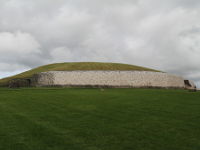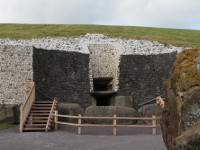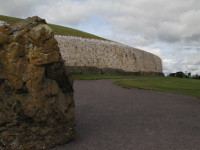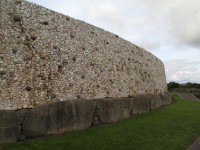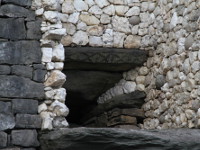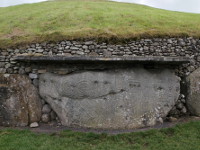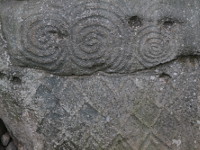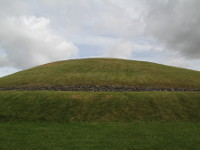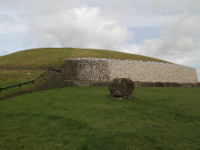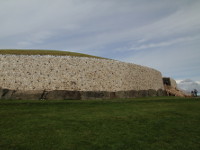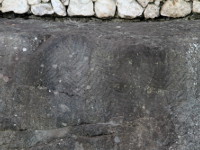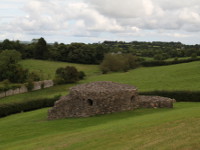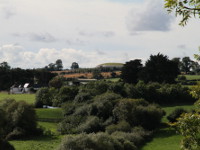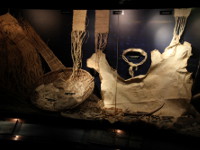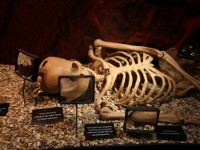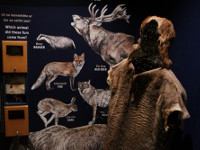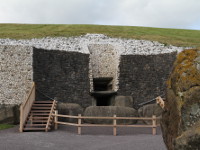
Newgrange
East Ireland | County Meath
The passage tomb of Newgrange is one of the most important Neolithic Monuments in Europe and toghether with Knowth and Dowth, has been designated as UNESCO World Heritage Site, what makes it one of the most visited tourist attractions in Ireland. It is located about 4 km east of the village of Slane, in County Meath (the only access to the monument is through the Bru na Boinne Visitor Center, which is well signposted from the N2 road). This great cairn was built around 3200 BC by Neolithic people who settled this area 6000 years ago. It has approx 80 m in diameter, is about 12 m high and is surrounded by 97 large kerb stones richly decorated with intricate rock art. One of the most notable examples is entrance stone with famous triskele-like features carved on it. The mound of Newgrange covers single tomb. 19 m long passage leads to the large central chamber (5m by 6m, with perfectly made corbelled roof, which rises up to 6 m) with three small chambers (or recesses) on its sides, which together form a cross shape. Each satellite chamber contain large stone basin, which may have originally held human remains. Both, the passage and chambers are richly decorated with megalithic art. The Newgrange passage tomb is aligned to the south-east so that the rays of the midwinter solstice sunrise come through the "roof-box'' above the entrance and shine down the the passage and finaly illuminate the chamber. During excavations, archaeologists found the remains of at least five people, two unburnt and three cremated, most were concentrated in the east and the west chambers but also some occured in the central chamber and at the junction with passage. They also found seven stone polished stone balls, two stone beads, four pendants, various fragments of bone pins, a flint and bone chisels. The reconstructed front facade of white quartz stones studded at intervals with water-rolled boulders is interpretation of archaeologist Michael J. O'Kelly (who led the excavations and restoration of Newgrange in the years 1965 -72) and has raised some controversy in archeological community. The quartz stones and the granite cobbles that were found during the excavation, scattered around the cairn. It is interesting that none of these stones are local to the Boyne Valley. Quartz came from Wicklow and granite from Dundalk Bay. Around the Newgrange mound there is Great Stone Circle built in the mid to late third millennium. Three of the upright stones near to the temple entrance throw shadows onto the decorated stone on the midwinter solstice sunrise, the equinox sunrise, and the sunrise of the midpoint beetwen solstice end equinox. Newgrange passgae tomb can be visited only by guided tours from Brú na Bóinne Visitors Centre. The tour is very interesting and well organized.
- OPENING HOURS :
- March 25th - April:
- Daily: 9:30 - 17:30
- May:
- Daily: 9:00 - 18:30
- June-Mid September:
- Daily: 9:00 -19:00
- Mid-End September:
- Daily: 9:00 - 18:30
- October-November 2nd :
- Daily: 9:30 - 17:30
- March 25th - April:
- TICKET PRICES :
- Adult: €6
- Senior/Group: €5
- Child/Student: €3
- Family: €15
- CONTACT :
- Phone: +353 41 988 0300
- CAR PARK :
- Yes
Photos from Newgrange
